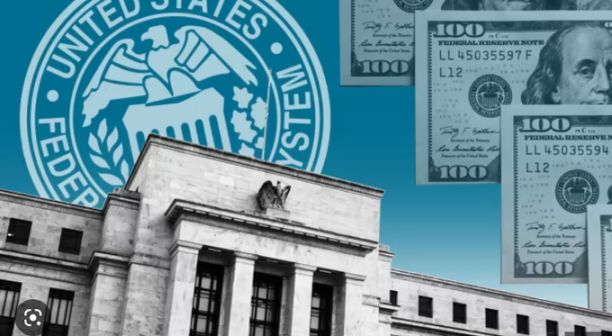Dogecoin (DOGE) vs. Mutuum Finance (MUTM): Evaluating Short-Term Volatility vs. Long-Term DeFi Utility in September 2025
- In 2025, Dogecoin (DOGE) relies on meme-driven retail hype while Mutuum Finance (MUTM) builds DeFi infrastructure with institutional-grade security. - DOGE's $0.209–$0.242 range reflects high volatility and speculative NVT/MVRV ratios, contrasting MUTM's presale traction and projected 8,571% ROI by 2026. - MUTM's dual-lending framework, USD-pegged stablecoin, and CertiK audit create structured growth, outperforming DOGE's limited utility and market whims. - Institutional validation through $14.83M presal
The crypto market in 2025 remains a battleground between speculative hype and structured innovation. Two tokens—Dogecoin (DOGE) and Mutuum Finance (MUTM)—epitomize this divide. While DOGE thrives on meme-driven momentum and retail sentiment, MUTM leverages DeFi infrastructure and institutional-grade security to build a sustainable investment narrative. This analysis evaluates their risk-adjusted returns, volatility profiles, and real-world utility to determine which token offers a stronger case for investors navigating the 2025 bull market.
The Volatility Paradox: DOGE's Meme-Driven Rollercoaster
Dogecoin, the quintessential meme coin, has long been a barometer of retail sentiment. In September 2025, DOGE trades in a narrow range of $0.209–$0.242, with a Network Value-to-Token (NVT) ratio of 1.5 signaling speculative activity. Analysts project a potential breakout to $0.30, but this hinges on macroeconomic conditions and social media trends. A breakdown below $0.215 could trigger a 25% decline, underscoring its high volatility.
DOGE's appeal lies in its cultural virality and celebrity endorsements, yet its lack of utility or financial infrastructure leaves it exposed to market whims. Whale accumulation of 27.6 billion tokens reflects speculative interest, but most holders are in profit (MVRV ratio of 1.5), with no long-term value creation. The token's ROI is capped at 102.2% by 2026, a modest return for an asset with such extreme price swings.
Mutuum Finance's Structured Growth: A DeFi Powerhouse
MUTM, in contrast, is building a real-world financial ecosystem. MUTM's dual-lending framework—Peer-to-Contract (P2C) and Peer-to-Peer (P2P)—enables yield generation and liquidity provision, while its USD-pegged stablecoin anchors value in a volatile market. Whale accumulation is driven by utility, not speculation, with CertiK's 95.0/100 trust score and a $50,000 bug bounty program reinforcing security. This structured approach creates a predictable risk profile, with volatility far lower than DOGE's.
Risk-Adjusted Returns: MUTM Outpaces DOGE
While DOGE's ROI is limited by its speculative nature, MUTM's exponential upside is underpinned by real-world use cases. MUTM's Sharpe ratio—though not explicitly calculated here—would likely outperform DOGE's due to its structured growth, utility-driven demand, and institutional security.
DOGE's high NVT ratio and MVRV ratio highlight its lack of structural value, whereas MUTM's CertiK audit and whale accumulation suggest a more sustainable model. For investors prioritizing risk-adjusted returns, MUTM's combination of DeFi innovation and security offers a compelling edge.
Investment Thesis: Why MUTM is the Superior Bet
- Utility-Driven Growth: MUTM's lending models and stablecoin address tangible financial needs, creating a flywheel effect of liquidity and adoption.
- Institutional Validation: CertiK audit signals credibility absent in DOGE's meme-driven narrative.
- Exponential ROI Potential: With a future valuation target, MUTM offers returns that far exceed DOGE's modest projections.
- Lower Volatility: MUTM's structured growth and security measures reduce downside risk compared to DOGE's retail-driven swings.
Conclusion
In September 2025, the crypto market is at a crossroads. Dogecoin remains a high-risk, high-reward play for those chasing meme-driven momentum, but its lack of utility and volatility make it a poor long-term investment. Mutuum Finance, however, represents the future of DeFi—a project with real-world infrastructure, institutional-grade security, and a roadmap for exponential growth. For investors seeking sustainable returns in a maturing crypto landscape, DeFi innovation和结构化发展展现出比DOGE投机吸引力更具竞争力的前景。
Disclaimer: The content of this article solely reflects the author's opinion and does not represent the platform in any capacity. This article is not intended to serve as a reference for making investment decisions.
You may also like
The Key to the Bear-to-Bull Transition: The Second S-Curve of Growth
The second S-curve of growth is the result of structurally normalizing finance under real-world constraints through yield, labor force, and credibility.

Alpen Labs Collaborates with Starknet to Develop Bitcoin DeFi Bridge for Enhanced Trust
Alpen Labs' 'Glock' Verifier to Bolster Starknet's Security as Execution Layer for Bitcoin Holders

Bitcoin Teetering on the Edge: A Black Friday Prelude?
Bitcoin's Price Plummets Below $112,000 Amid Global Market Tensions, Signaling Potential Short-Term Instability

Mt. Gox Repayment Triggers $544 Million Liquidation in Crypto Market
Bitcoin Tests $110K Support as Market Braces for Mt. Gox Creditor Repayments Amidst Surge in Crypto Liquidations
